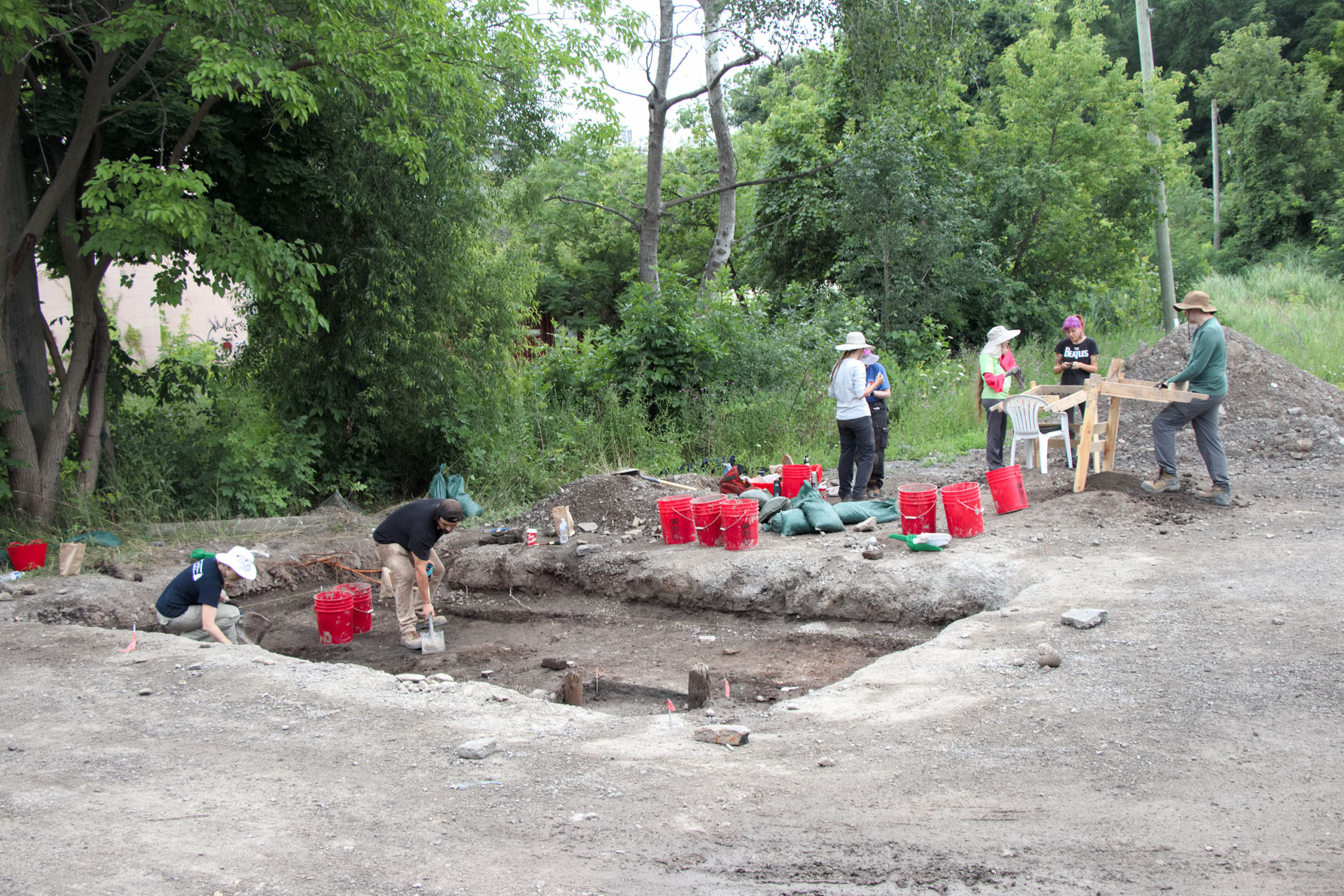To the untrained eye, the bits of broken glass, china and rusted metal might not look like much, but the more-than-100-year-old fragments tell an important story about St. Catharines’ maritime and industrial past.
Artifacts found at the site of what was once the Shickluna Shipyard will be on display during a series of open houses that will provide the public an opportunity to visit the archaeological excavation site and learn about its history.
The site, on the banks of Twelve Mile Creek near the Burgoyne Bridge, welcomed visitors Wednesday, Aug. 10, Saturday, Aug. 13 and Sunday, Aug. 14, from 11 a.m. to 3 p.m. each day.
“We look forward to sharing the results of our research with the public through a series of tours and displays at the excavation site,” says Kimberly Monk, a maritime archaeologist and Adjunct Professor with Brock University’s Department of History. “Visitors will have the chance to learn about the site’s history, view the archaeological excavation and see the documents, maps and artifacts that inform our study of this historic canal landscape.”
A team of Brock field school students and volunteers, led by Monk, have been excavating a worker’s cottage and boathouse at the site since July 11. This year’s work is a continuation of five weeks of excavation completed in 2019.
Now an empty lot, the site was once a busy industrial hub. It was first used as a shipyard by Russell Armington from 1828 to 1837 and then by Maltese immigrant Louis Shickluna from 1838 to 1880. Joseph Shickluna was the last to run the shipyard from 1880 to 1891 before it was leased to the St. Catharines Box and Basket Company until 1901. The ships built there supported the trade of bulk goods, such as grain, coal and lumber, throughout the Great Lakes region.
The dig’s students and volunteers have found plenty of evidence of the site’s once bustling status. They recovered more than 4,000 artifacts during the 2019 field season and are on track to recover more than twice that quantity this year, says Monk.
“Despite some weather setbacks, deeper contexts have resulted in an increased quantity of cultural materials and features that will aid our understanding of this significant maritime site,” she says.
Even little bits of rusted iron provide insight into the past, says student Manel Belhadji-Domecq, who has been helping to clean and catalogue metal artifacts in the field school’s lab.
“Even garbage tells a story,” she says. “What we throw away or leave behind is a consequence of the way we live and the things we use. The pieces we can identify tell us about the people who worked here and their activities.”
In addition to glass, china and metal, the team has found leather, bone, wood, plastic and brick artifacts, and will feature a selection from the 2019 and 2022 field seasons during the upcoming open houses.
While the project, which involves faculty from both Brock University and McMaster University, is funded through the Social Sciences and Humanities Research Council Insight Development Grant, Monk says the support of community businesses and local volunteers has been key.
“My deepest gratitude to our community sponsors for their support and generosity of the Shickluna Shipyard project,” she says. “Their various contributions are critical to the success of the work.”
Questions about the event can be sent to shicklunashipyard@gmail.com
What: Shickluna Shipyard Archaeology
Where: 45 Renown Road, St. Catharines
A video about the Shickluna Shipyard archaeological investigation is available on YouTube.
For more information or for assistance arranging interviews:
*Doug Hunt, Communications and Media Relations Specialist, Brock University dhunt2@brocku.ca or 905-941-6209




















